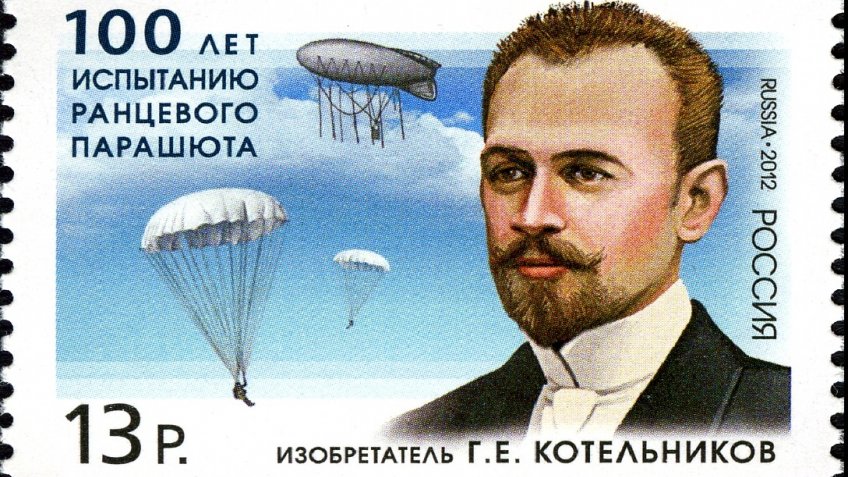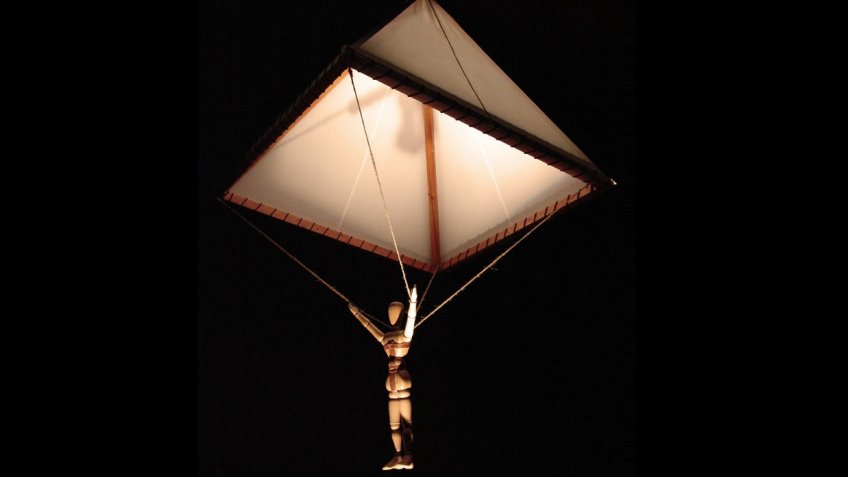
1910's Russia-wide Festival of Aeronautics was marred by a tragedy: an aeroplane went to pieces whilst in the sky, and the shocked spectators observed the death of a pilot, all happening right in front of their eyes. This was the first-ever air crash to have occurred in the Russian Empire. Strangely enough, but this is what inspired a Russian actor from St. Petersburg to invent the knapsack parachute.
Aerophobia is still a prevalent phenomenon today, unmoved by "positive" statistics. During civil aviation (almost 100 years), less than 150 thousand people have died. By comparison, more people around the world become victims of road accidents in a single month.
But at the beginning of the 20th century, this fear was more than justified. Aviation was beginning to develop, and pilots took incredible risks by taking to the skies. In the event of a severe malfunction, there was virtually no chance of survival. The only escape route was to use long folded "umbrellas" attached to the aircraft with a thin rope, which burst from a sharp jerk. The construction was very unreliable and heavy, and therefore it was seldom used.
Gleb Kotelnikov pursued two hobbies from childhood: on the one hand, he got his interest in engineering from his father, a professor of mechanics and higher mathematics; on the other hand, he loved theatre. He eventually graduated from military school, but after serving three years, he went into reserve. In 1910 the young man became an actor with the troupe of the People's House in St Petersburg.
In the same year, he witnessed the death of the aviator Lev Matsiyevich, who performed at the first celebration of Russian pilots with demonstration flights. Fulfilling Grand Duke Alexander Mikhailovich's wish to show off some aviation achievement, the pilot crashed. Since then, the actor, overly impressed with what he saw, could not get out of his head a question that was way too far from what he was doing. Why was the parachute, the idea of which belongs to Leonardo da Vinci, not used in aviation?
"If a man has a tent of starched cloth 12 cubits wide and 12 cubits high, he will be able to throw himself from any height without danger to himself," the great Italian wrote in 1483.
The open parachute is attached to a basket, but you can't hang an aeroplane from a parachute. Kotelnikov came up with the original idea to fix it not for the machine but the man. A thin and robust round-shaped cloth (originally pure silk) was placed in a compact backpack or a knapsack. At first, it was wooden, but later it became metal. At the bottom of the bag, under the dome, two springs ejected the fabric into the stream after a person pulled out a drawstring. Also fundamentally new was that, for the first time, all the harness slings were divided into two groups and attached to the shoulder straps of the harness. In the centre of the dome, a pole hole was made for air release.
In October 1911, one year after the tragic event, the inventor registered his product and received the privilege: "No. 5010 for a rescue bag for aviators with an automatically ejectable parachute". It was designated RK-1 (Russian, Kotelnikov, model one). And in 1912, the invention was patented in France, Germany and the USA.
The first demonstration tests were carried out using a car:
- The parachute was tied to the vehicle by towing hooks.
- It was accelerated.
- The trigger belt was pulled.
The braking force of the unfolded canopy caused the engine to stall. It was time to test the system in the sky. Who was the brave man who had tested the first backpack parachute? They called him Ivan Ivanovich, and it contained... 80 kg of sand. A dummy was dropped from a balloon at different altitudes and satisfied with the results. They recognized the invention as successful. A living person jumped for the first time from the RK-1 in 1913 - at a contest in Rouen, France, a student of the St. Petersburg Conservatory, Vladimir Ossovsky, took a swing from the 60-meter mark of a bridge spanning the Seine.
Kotelnikov's invention gained recognition abroad. His demonstration steadily drew applause. But Tsarist Russia remembered him only during the First World War. The engineer was invited to take part in the manufacture of rescue packs for multi-engine aeroplane pilots.
Parachutes were beginning to be treated as more than just a spectacular attraction. In 1917 65 parachute jumps were performed in the Russian army: 36 for rescue and 29 for training.
And Gleb Kotelnikov continued to work on the modernization of his brainchild. In 1923 he patented a model with a soft rucksack, then he created a cargo parachute, which could lower a load of up to 300 kg. In 1926 he handed over to the Soviet authorities all his works, which were adopted by the Air Force.
Parachuting in the USSR became a more or less widespread phenomenon in the 1930s. It is attributed to the emergence of the agency for rescuing military pilots in-flight, teaching how to jump down from a multi-passenger aircraft.
The former actor, who became an internationally renowned engineer, died in Moscow on 22 November 1944. His grave has become a site of pilgrimage for paratroopers from all over Russia. They gather at the Novodevichy Cemetery to tie parachute lashings to the trees encircling the resting place as a sign of remembrance.



